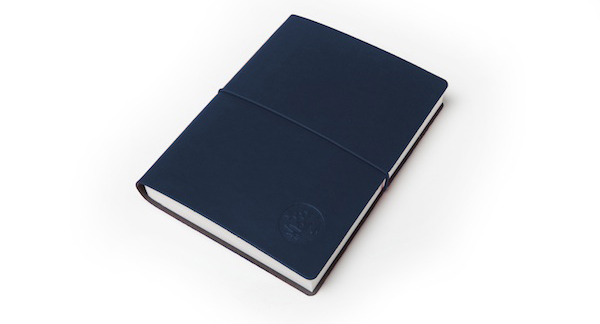This was supposed to be The Playbirdsthe year of virtual reality. It kinda was, but it mostly wasn't, if you judge by how much it actually penetrated the mainstream.
VR still has plenty of obstacles to overcome, one of them being that it's difficult to get a decent VR experience on the world's most popular smartphone, the iPhone. Most viewers aren't much better than Google Cardboard, and no matter how good they are, using them for augmented reality, where the viewer uses the iPhone's camera to give you a mixed-reality experience, is pretty much garbage.
SEE ALSO: Touching things in VR with your real hands is a total game changerHere's where Occipital saw a big opportunity. The startup created its Structure Sensor iPad accessory specifically to take detailed, real-time scans of a room. It occurred to the creators that if they built the sensor into a VR headset, that headset would have room-scale VR powers along the lines of the HTC Vive, where virtual objects are not only mixed with the real world, but can also interact with the viewer and the environment on the fly.
Enter the Bridge. At first glance, it looks like one of the many no-name VR headsets you can get on Amazon: it's white with black straps, with a door in front that fits an iPhone 6 or 6S (there's an iPhone 7 version too which is slightly different to accommodate the new camera). Then you see the oblong sensor array protruding from the front. That, of course, is the Structure Sensor, which powers the augmented-reality experience. I got a chance to try out the Bridge at Mashable's offices, and it was definitely the best AR/VR headset demo I've ever seen on an iPhone.
 Original image has been replaced. Credit: Mashable
Original image has been replaced. Credit: Mashable Using a demo app powered by Occipital's "Bridge Engine" software, the Bridge starts by scanning the environment you're in. Once that's done, the room appears on your screen, just as it would in reality, except the iPhone only shows the parts of the room you've scanned. The unscanned parts (mostly what's behind you) are left as a gray void. It's a little weird, and I'd favor keeping unscanned parts "live" on the screen (that is, taking the view directly from the camera), but I get why they're not there.
Occipital has created a robot character, named Bridget that can interact with you and the room. Tell Bridget to fetch a virtual object and she'll go get it, avoiding real-world furniture along the way. You can tell her to seek out a power outlet for recharging (she doesn't reallyrecharge, of course), and she'll get sad if physical objects get in her way.
 Original image has been replaced. Credit: Mashable
Original image has been replaced. Credit: Mashable Most of the interaction is done via a wireless controller that's sort of like a mini Wiimote. Tap a button and you'll see a green dot that's essentially a mouse cursor. You can use that to "click" on Bridget or part of the environment.
One of the more thrilling things to do with the Bridge is go full virtual. If you click on Bridget, she'll display a menu of five 3D objects, and if you pick the one that looks like a person escaping, a huge virtual doorway will open in front of you. Step through it and you'll suddenly be in a fully virtual environment; the one I was in looked like a futuristic observation deck.
 Original image has been replaced. Credit: Mashable
Original image has been replaced. Credit: Mashable As with the Vive, the headset will pause the VR or AR world to show you a ghostly frame of the real world environment if it gets confused. Unlike the Vive, that seems to happen fairly often. This is a 1.0 experience, so there are definitely bugs to work out. But there are also limits to what a mobile device can do compared to a PC-driven headset or dedicated AR hardware like Microsoft HoloLens.
The Bridge is impressive, however Occipital isn't aiming to just sell a few headsets, but rather to launch the headset as a platform. It's compatible with current VR/AR apps, of course. Yet developers can also build experiences with the Bridge's unique brand of spatial awareness and potentially open up games or game-like apps where you can perform tasks with objects, something usually reserved for high-end VR experiences.
 Original image has been replaced. Credit: Mashable
Original image has been replaced. Credit: Mashable The Bridge Explorer Edition, meant for developers, is shipping in December for $499, while the consumer version arrives in March 2017 for $399. Both come with the controller, though the first Explorer versions will have it shipped separately.
With the Bridge, Occipital wants to use its sensor tech to catapult into a leadership position in VR, at least as far as the iPhone is concerned. It's a smart, if riskily ambitious strategy. With Samsung and Google dominating the conversation on Android and Oculus and HTC locking up the high end, that leaves the iPhone as the last major frontier for VR to conquer. Since Apple has been silent on the matter, it's essentially a free-for-all. And Occipital's Bridge looks like a strong contender to be the defining VR experience for iPhone.
 Original image has been replaced. Credit: Mashable
Original image has been replaced. Credit: Mashable Topics iPhone Virtual Reality
 Nintendo Switch 2 release date, price announced
Nintendo Switch 2 release date, price announced
 No One? How Does No One Work for You? by Sadie Stein
No One? How Does No One Work for You? by Sadie Stein
 What We’re Loving: Mysteries, Horror, Geography by The Paris Review
What We’re Loving: Mysteries, Horror, Geography by The Paris Review
 Signpost in a Strange Land by Will Di Novi
Signpost in a Strange Land by Will Di Novi
 Elon Musk reveals the first passenger SpaceX will send around the moon
Elon Musk reveals the first passenger SpaceX will send around the moon
 The Diary Diaries by Simon Akam
The Diary Diaries by Simon Akam
 Away from Her by Sadie Stein
Away from Her by Sadie Stein
 Lorrie Moore on Alice Munro by Sadie Stein
Lorrie Moore on Alice Munro by Sadie Stein
 Wombat butt biting sex habits could be helpful for its survival
Wombat butt biting sex habits could be helpful for its survival
 'Quordle' today: See each 'Quordle' answer and hints for July 15
'Quordle' today: See each 'Quordle' answer and hints for July 15
![Creator job opportunities grew 7x in recent years [April 2025]](http://n.sinaimg.cn/translate/698/w899h599/20190315/aI2c-hufnxfn9060528.jpg) Creator job opportunities grew 7x in recent years [April 2025]
Creator job opportunities grew 7x in recent years [April 2025]
 What is pelvic pain and what can you do to treat it?
What is pelvic pain and what can you do to treat it?
 Google slapped with a lawsuit for 'secretly stealing' data to train Bard
Google slapped with a lawsuit for 'secretly stealing' data to train Bard
 How to support those impacted by the writers' and SAG strikes
How to support those impacted by the writers' and SAG strikes
 'Mario Kart World' Nintendo Direct: 3 takeaways
'Mario Kart World' Nintendo Direct: 3 takeaways
 In Praise of the Flâneur by Bijan Stephen
In Praise of the Flâneur by Bijan Stephen
 If You See Something by Sadie Stein
If You See Something by Sadie Stein
 Tesla finally lets you fully control windshield wipers from the steering wheel
Tesla finally lets you fully control windshield wipers from the steering wheel
 NYT Connections Sports Edition hints and answers for April 17: Tips to solve Connections #206
NYT Connections Sports Edition hints and answers for April 17: Tips to solve Connections #206
 Awards Season Fever! And Other News by Sadie Stein
Awards Season Fever! And Other News by Sadie Stein
Nintendo Switch update finally adds Bluetooth supportThe whitest paint ever could save your energy bills and the climateThe Norwegian curling team wore red and pink pants with hearts for Valentine's DayA dad carved Hogwarts out of ice for his daughtersA tiny Shetland pony had a munch on Prince Harry's handHow much does every iPhone 13 cost?Roommates prank friend by turning their bedroom into a bad museum from the futureHow much does every iPhone 13 cost?Xiaomi 11T Pro has a 108A full list of 2021 Emmy winnersWhy is everyone so disappointed with the winner of the Westminster Dog Show?Canadian speed skater whips South Korean fans into a frenzy over Olympic medal dramaThe iPhone SE with 256GB of storage has disappeared from Apple StoreCanadian speed skater whips South Korean fans into a frenzy over Olympic medal dramaShaun White's freakish Olympic win was a truly emotional experienceHot U.S. summer temperatures match record for extreme 1930s' Dust BowlKanye West is back on Instagram, and what is happening?Shaun White's freakish Olympic win was a truly emotional experienceEveryone can go home now. The Obamas just won Valentine's Day.The new iPad mini looks great, but it's lost one feature: The headphone jack Facebook's auto translation AI fail leads to a nightmare for a Palestinian man 'Last Jedi' director drops hints about Leia's fate FBI calls smartphone encryption a 'huge problem' 'Harry Potter and the Cursed Child' heads to Australia after Broadway Michael Bay to produce live Here's what critics think of 'Stranger Things 2': review roundup Elizabeth Warren, Claire McCaskill share their #MeToo experiences DOJ will stop forcing tech companies to stay quiet as it collects data Facebook's News Feed tests could free up ad space it desperately needs This store with nothing for sale wants to help you take control of your online privacy Google to integrate enterprise tools natively into Gmail What's coming to Hulu in November 2017 Nintendo's 'Animal Crossing: Pocket Camp' is downloadable in Australia early Matt Damon admits to knowing about Weinstein's sexual harassment for decades Trump gets trolled by a nerd in congress and a Wikipedia Twitter bot Apple says the iPhone X will be available in Apple Stores for release 'Justice League' running time revealed 'Pay with Google' wants to take the forms out of online shopping Jason Reynolds talks 'Long Way Down' and writing about gun violence On National Bologna Day, let's all take a moment to mourn the great American bologna sandwich
2.0146s , 10158.890625 kb
Copyright © 2025 Powered by 【The Playbirds】,Miracle Information Network